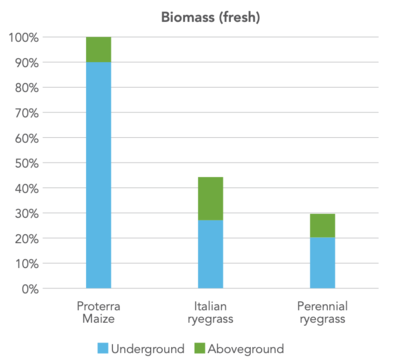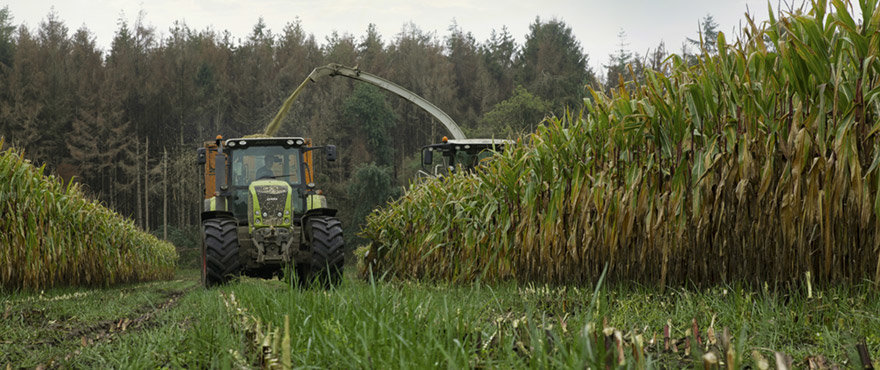Is your contractor working overtime with his big forage harvester to get the maize in on time? Then you can rest assured that this year will yield a bumper crop. Sowing green manure crops is indispensable to maintain healthy soil while ensuring a good yield of maize. But undersowing can also present significant challenges. Proterra Maize demonstrates the exact opposite. This environmentally friendly product combines successful undersowing with significant advantages.
Longer sowing window
The main problem with undersowing is getting the timing right. Most farmers sow their crops in June or July, in the 6th to the 8th leaf stage. Sometimes the fields are too wet to bring in the necessary farm machinery, or the soil can also be too dry, which hinders germination.
You can undersow Proterra Maize as you normally would or opt to sow Proterra Maize simultaneously with your main maize crop, or even beforehand. Experience shows that early sowing generally yields a better crop because weather conditions are often more favourable. The seed then has sufficient moisture and optimal temperatures to ensure proper germination.

No competition with the main crop
If the green manure crop grows too fast, it may rob the main crop of critical sunlight, moisture and minerals. Proterra Maize is composed of several carefully selected grass varieties. It germinates quickly, but after emergence it grows more slowly, since it first develops a deep, robust root system, giving the main crop plenty of time to grow.
More biomass underground
You don't have to worry about the soil being too wet for a good quality crop. The intensively branched root system characteristic of Proterra Maize creates a higher bearing capacity of the soil. This means that you can harvest when the crop is ripe without risking structural damage to the plants.
The deep root system also improves soil drainage, which in turn boosts the resistance of both the main crop and the green manure to extreme weather conditions. The large amounts of organic matter underground create a more fertile soil providing for a better crop performance the following year.

Source: ‘Grondig Boeren met Mais Brabant’ project undersowing demonstration 2018, WUR Field Crops
Better resistance against crop protection
Crop protection is important to grow and harvest top quality maize. Many green manure crops cannot survive crop protection treatments. In 2017, Wageningen University & Research conducted research into the relationship between green manure crops and crop protection. Trials showed that Proterra Maize had the highest tolerance to crop protection, thanks to the fine but robust leaf structure and strong root system of the selected grass variety.
GreenEarth for sustainable dairy farming
With Proterra Maize sustainable food production becomes a little easier. That is why Proterra Maize has the GreenEarth-label. To get this label a product must fulfil several conditions. Proterra Maize has the GreenEarth-label because of the following reasons:
- Proterra Maize ensures a build-up of organic matter in the soil. This makes the plot more resistant to weather influences such as drought and heavy rainfall in the long term.
- Proterra Maize prevents mineral leaching.




